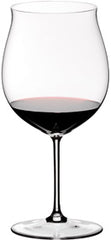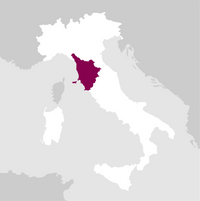Description
The Chianti Classico San Lorenzo from the Castello di Ama winery takes its name from the valley overlooking the vineyards that supply its grapes. The presence of two 18th-century villas makes the landscape one of the most evocative. The small church dedicated to San Lorenzo, located in the center of the village of Ama, was purchased by the winery. The production regulations require that the grapes come entirely from the company's own vineyards. The terroir is among the most suitable of all. It faces east/southeast. The soils are medium-textured clay-limestone, which promotes good drainage. The marked temperature variations between day and night ensure good ripening of the grapes and an excellent sugar concentration. San Lorenzo wine has a designation that few can achieve, placing it at the top of the quality pyramid: Chianti Classico Gran Selezione DOCG. The grape varieties used to produce Chianti Classico San Lorenzo are 80% Sangiovese, 13% Merlot, and 7% Malvasia. The harvest generally takes place between the end of September and the beginning of October. The Malvasia grapes are vinified first, followed by Merlot and, finally, the Sangiovese. Hand-picking allows the grapes to arrive intact in the cellar, where they are immediately pressed. Fermentation is initiated with indigenous yeasts in stainless steel tanks, with maceration characterized by continuous pumping over. After racking, the wine is placed in barriques for malolactic fermentation. Subsequently, the various batches are assembled and aged in barriques.
Awards
Details

Perfume

Color

Taste
Serve at:
18 - 20 °C.
Longevity:
10 - 15 years
Decanting time:
1 hour

Pairings
- Start up year: 1976
- Oenologist: Marco Pallanti
- Bottles produced: 320.000
- Hectares: 75
To date, Castello di Ama owns and manages about 75 hectares of vineyards and 40 hectares of olive groves, relying on the work of more than 60 people. The role of general manager and oenologist is held continuously by Marco Pallanti, who served, between 2006 and 2012, as President of the Chianti Classico Consortium, bringing the contribution of the creation of the 'Gran Selezione' category with the aim of highlighting the extraordinary quality and diversity of the region's wines. Read more


| Name | Castello di Ama Chianti Classico Gran Selezione San Lorenzo 2013 |
|---|---|
| Type | Red still |
| Denomination | Chianti Classico DOCG |
| Vintage | 2013 |
| Size | 0,75 l |
| Alcohol content | 13.0% by volume |
| Grape varieties | 80% Sangiovese, 10% Malvasia Nera, 10% Merlot |
| Country | Italy |
| Region | Tuscany |
| Vendor | Castello di Ama |
| Climate | Numerous and frequent rainfalls characterised the first two months. Temperatures began to be spring-like from the middle of March. April and the first two weeks of May were exceptionally rainy and rather cold. The vegetative delay induced by the low temperatures, however, averted the danger of disease. June developed into a crescendo of temperatures and fine days that introduced the summer heat of July. August was quite variable, with temperate days, some rain, and days of scorching heat but with cool nights. The harvest began on 6 September with the early varieties, after a week the merlot and, towards the end of the month, the Sangiovese. |
| Yield per hectare | Gran Selezione is an important step for the Chianti Classico appellation and becomes the apex of the Chianti Classico quality pyramid. Wines bearing this name are a guarantee for the consumer in terms of both origin and quality. In fact, the production regulations require that the grapes be entirely produced on the estate and that the wine be placed on the market 30 months after harvest |
| Harvest | Between 28 September and 8 October, around 1,300 quintals of grapes were harvested by hand into small 12 kg crates. |
| Fermentation temperature | After a passage on the sorting table, the crushed and destemmed grapes are fermented, variety by variety, in steel tanks at a temperature of around 30 to 32 degrees. During fermentation, the must was stirred several times a day |
| Fermentation | Maceration lasted for about 21 to 23 days. After racking, the 900 hl of wine underwent malolactic fermentation |
| Aging | After blending, the wine went entirely into barriques, 20% first-passage and the rest used, where it was aged for about 12 months. |
| Allergens | Contains sulphites |






